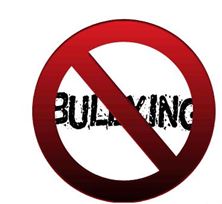 We’ve all worked with them – bullying co-workers, managers, supervisors and entrepreneurs – and it’s never fun. What is a workplace bully? Someone who manipulates, badgers, intimidates and ignites fear in the workplace in their determination to maintain control and drive their own agenda. Why do they get away this behavior? Because they can. No one stops them. We all remember stories about the big kid who picked on weaker kids or the “mean girls” who were merciless. The hope is that once you get out of school and into the workplace it all changes and there are no more bullies, but alas, they are alive and well.
We’ve all worked with them – bullying co-workers, managers, supervisors and entrepreneurs – and it’s never fun. What is a workplace bully? Someone who manipulates, badgers, intimidates and ignites fear in the workplace in their determination to maintain control and drive their own agenda. Why do they get away this behavior? Because they can. No one stops them. We all remember stories about the big kid who picked on weaker kids or the “mean girls” who were merciless. The hope is that once you get out of school and into the workplace it all changes and there are no more bullies, but alas, they are alive and well.
Workplace bullying is actually a widespread problem:*
- 27% of US employees have experienced some form of bullying at work
- 50% of the US workforce reports either having been bullied by someone at work or having witnessed someone else being mistreated
- 72% of bullies are bosses (abusing employees is not illegal unless the treatment is demonstrably based on age, sex, race or religion)
- Bullying is four times more prevalent than illegal harassment
The question is why? Just like a fire needs air to exist, bullies have two requirements to persist in their behavior – a playground and participants. If you take both of those away, then they no longer have a platform. Think of a bully like the proverbial “bull in a china shop.” They stroll through the store leaving a trail of broken dishes with little more than a glance backward, completely unaware of the destruction they have just caused, or in some cases, they are aware, but refuse to take any responsibility for their part in causing it and blame others.
How do we change things? Let’s start with “the playground.” Bullies must have a theater or an environment that allows or even encourages bullying behavior to begin with. This can be a dysfunctional department, project, environment, person or entire company. It means that collectively, there is an unspoken belief that bully behavior is okay. At the very top levels, the leadership has condoned the playground. By not stopping it, they have approved it, and in some cases, (think Wall Street), it’s encouraged. So the choice is not to populate the playground, stay out of the department, choose not to “show up” or even leave the company. At the end of the day, it’s hard to be a bully when you’re alone.
The next condition is “participants.” Taking yourself off the playground helps, but a good bully always finds another victim, so the next thing to do is say “no.” Bullies are usually people who either have physical strength, or in the case of the workplace, “institutional strength,” through a position of authority or influence. In most cases, they are actually insecure and petty people, using their position to belittle and intimidate others. Don’t let them. Call them out on behavior that is inappropriate and say “I don’t agree,” or, “I don’t feel that was appropriate” and walk away. Don’t engage in conversation, and let them know you are NOT participating any longer. Say no more.
This will likely lead to your departure from the company so be prepared for that. However, if you really look hard at the values of a company that allows bullying – do they reflect your values? I bet they don’t. In the end, you control the amount of air given to a bully’s flame – without a playground or participants, you have effectively blown the flame out.
To find out more about dealing with workplace bullying you can visit The Workplace Bullying Institute.
*Statistics according to The Workplace Bullying Institute 2010 and CareerBuilders, 2011
Photo credit: Photobucket
